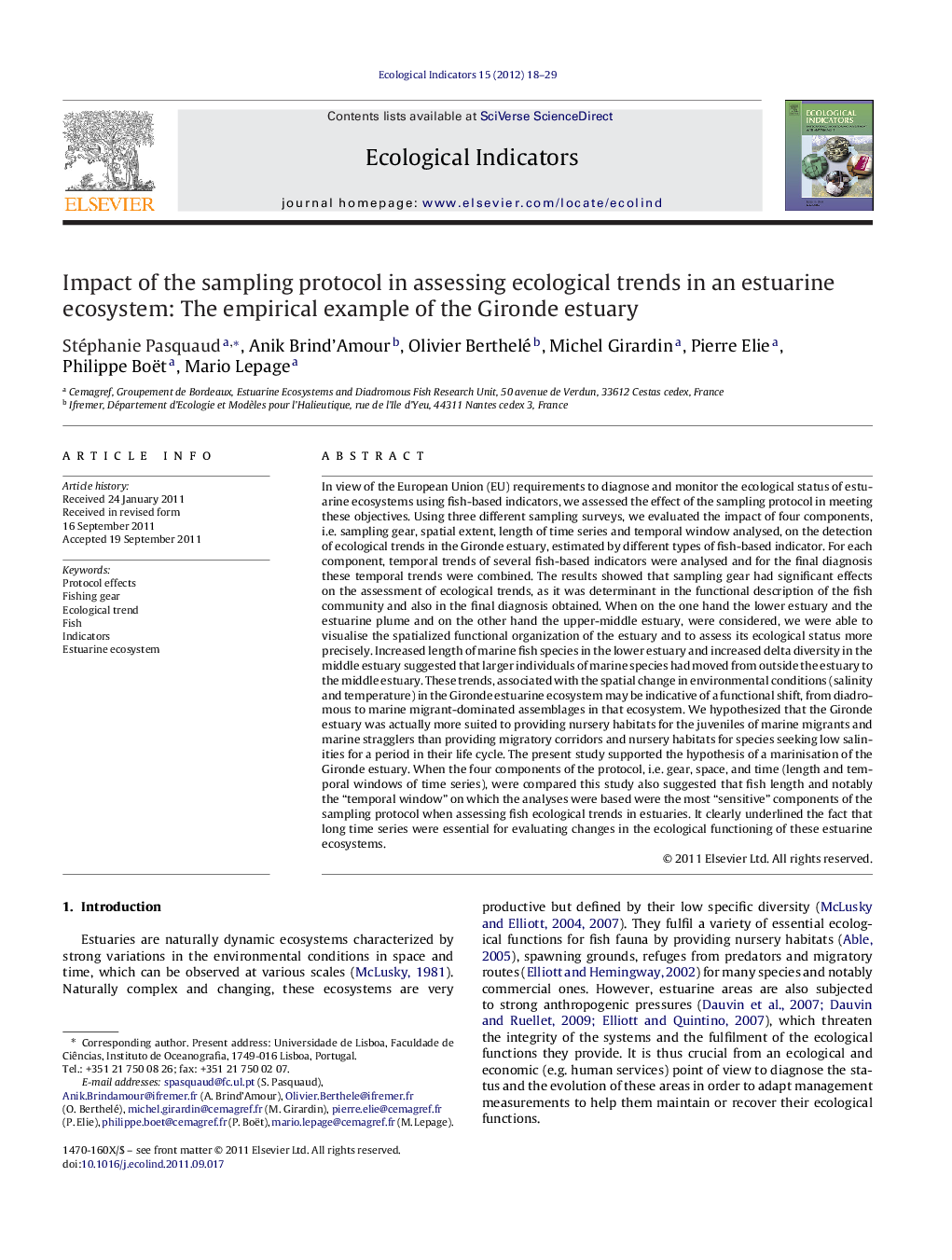| Article ID | Journal | Published Year | Pages | File Type |
|---|---|---|---|---|
| 4373909 | Ecological Indicators | 2012 | 12 Pages |
In view of the European Union (EU) requirements to diagnose and monitor the ecological status of estuarine ecosystems using fish-based indicators, we assessed the effect of the sampling protocol in meeting these objectives. Using three different sampling surveys, we evaluated the impact of four components, i.e. sampling gear, spatial extent, length of time series and temporal window analysed, on the detection of ecological trends in the Gironde estuary, estimated by different types of fish-based indicator. For each component, temporal trends of several fish-based indicators were analysed and for the final diagnosis these temporal trends were combined. The results showed that sampling gear had significant effects on the assessment of ecological trends, as it was determinant in the functional description of the fish community and also in the final diagnosis obtained. When on the one hand the lower estuary and the estuarine plume and on the other hand the upper-middle estuary, were considered, we were able to visualise the spatialized functional organization of the estuary and to assess its ecological status more precisely. Increased length of marine fish species in the lower estuary and increased delta diversity in the middle estuary suggested that larger individuals of marine species had moved from outside the estuary to the middle estuary. These trends, associated with the spatial change in environmental conditions (salinity and temperature) in the Gironde estuarine ecosystem may be indicative of a functional shift, from diadromous to marine migrant-dominated assemblages in that ecosystem. We hypothesized that the Gironde estuary was actually more suited to providing nursery habitats for the juveniles of marine migrants and marine stragglers than providing migratory corridors and nursery habitats for species seeking low salinities for a period in their life cycle. The present study supported the hypothesis of a marinisation of the Gironde estuary. When the four components of the protocol, i.e. gear, space, and time (length and temporal windows of time series), were compared this study also suggested that fish length and notably the “temporal window” on which the analyses were based were the most “sensitive” components of the sampling protocol when assessing fish ecological trends in estuaries. It clearly underlined the fact that long time series were essential for evaluating changes in the ecological functioning of these estuarine ecosystems.
